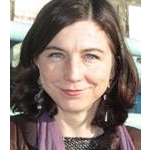Blog
Diversity in the classroom: real discussions in which different assumptions meet
I was asked to be the Humanities speaker at the first UCU ‘Teacher Talks – Liberal Arts and Sciences in action’, organised for the UCU introduction week on Tuesday August 23rd, 2016. They asked me to ‘entertain by telling stories’, introduce myself and my research in comparative philosophy, show the relation between my research and my teaching, explain what philosophy is and what is the relation between philosophy and the Liberal Arts and Sciences, and explain how my discipline is relevant to society. I picked up three words to discuss with the 400 students and colleagues in the audience: openness, awareness and diversity. Here I will share what I told them about diversity.
“We need, first of all, to realize that we all have fundamental assumptions about what is real (I assume that I am real, that chairs, kisses, and cherries are real), about what we can know (I assume that I know that I am wearing a blue dress and talking to you guys rather than wearing my pyjamas and dreaming about this). We also have fundamental assumptions about what is happiness, food, freedom, the self —you name it.
I submit that in order to become really aware of our hidden, unquestioned, everyday assumptions one needs to get acquainted with different ones. We need to study theories of reality, knowledge and the good that are deeply different from each other.
For instance, Parmenides metaphysics, Advaita Vedānta, Taoist, and Buddhist metaphysics do not assume that reality is made of building blocks. Building blocks, according to all of them, are our human abstractions from what is real. A sub-atomic particle is an abstraction, a chair is an abstraction,Chiara is an abstraction, a thought: a man-made concept to come to term with a reality that cannot be cut at the joints because it has no joints.
I don’t teach Chinese, Indian and Japanese metaphysical theories in order to be politically correct. I teach these metaphysical theories, because comparing views on reality that include non-building blocks worlds is training in diversity.
Three months ago at a Comparative philosophy Conference in Honolulu I met an amazingly scholar, whose work I had fed my thesis students: Professor Peter Hershock. Peter Hershock, in his bookValuing Diversity (2012), contrasts variety with diversity. Variety is what happens in a zoo; diversity in an ecosystem. Variety is static and might be captured in a picture. In a classroom there might be variety from class 1 if there are students coming from different ethnic backgrounds, with different hairstyles and dress preferences. However diversity obtains if and only if these students interact and become a group.
In my classes and philosophy get-togethers there is practice of diversity when students from different backgrounds interact and engage in real discussions —not debate geared towards winning—, but dialogues geared towards the profound moment in which one comes to see someone else’s reality: the reality of someone who does not share our most fundamental assumptions.
Thus while discussing different assumptions in philosophy at our LA&S College, we are training to become open and aware world-citizens ready to welcome diversity and thrive in it. Thank you.”
22 september 2016
U moet ingelogd zijn om te reageren, gebruik het formulier aan de linkerkant om in te loggen met uw solis gegevens.


